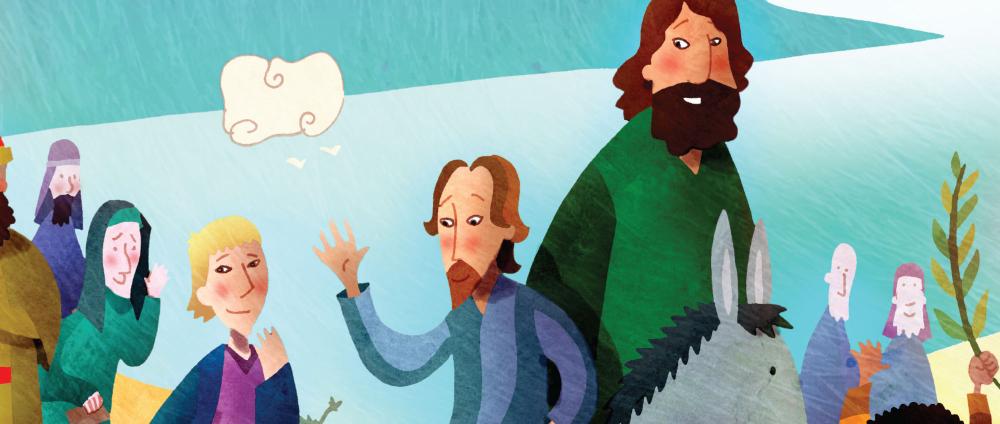
The Great Parade
This unit is intended to be placed in your schedule near Easter. If that timing doesn't work for your group, you may want to check out the suggestions for celebrating Easter with your group in this post.
- Imagine what it was like to be in the crowd that welcomed Jesus.
- Sense that Jesus is our King.
- Offer our own praise to Jesus, our King.
Leader Reflection
In this unit we focus on that one holy and epochal week in which all the central events of the Christian faith take place---from the frenzied parade of Palm Sunday to the dark hill of Golgotha to the shining angel by an empty tomb. It's an opportunity for your faith to grow as you share this greatest of all stories with your group.
Jesus' path to the cross begins outside the city of Jerusalem. Pilgrims are pouring into the city by the tens of thousands; spiritual fervor is at a fever pitch; messianic expectations charge the air. Many have heard about Jesus; now he's about to enter the city with his disciples. Shouts ring out: "Here he comes!" People throw robes on the ground and sing bits and pieces of the psalms, especially Psalm 118.
And there he is: riding a donkey, shoulders swaying to the rhythm of the beast, feet nearly dragging on the ground. Still they sing and shout. "Hosanna to the Son of David!"
It's hard to know what to make of this day. Do we join the parade, or do we stand back and rebuke the hypocrisy of the crowds? The event is shot through with irony and contradiction. The King on a donkey, the acclamation of the people now, and then condemnation later in the same week.
It's important to notice that Jesus isn't a surprised and reluctant celebrity here. He takes the initiative, sending two disciples to procure the animal with explicit directions. It's a striking example of prophecy being fulfilled on purpose. One could say he played the crowd like a master politician. That's exactly what scared the Pharisees, who feared that the people might truly crown him king of the Jews, bringing down the wrath of their Roman rulers.
Planned or not, the striking thing is that everything said and done that day was no charade, no flash-in-the-pan celebrity on parade. Jesus is the King who brings peace. He deserves all the acclamation and praise.
In Matthew's gospel, Jesus' parade route takes him right into the temple (in keeping with Psalm 118, which the people were singing). There he angrily turns over tables and demands that the merchants and money changers clear out. They are making God's house a "den of robbers." He is the King they acclaim, and he has authority over the house of God.
He does two more things in the temple: he welcomes the blind and the lame and heals them, and he welcomes the children's shouts. These are two classes of people who, according to the law, don't belong there. But the King opens up God's house to those who were excluded.
Yes, King Jesus will end up mocked and crowned with thorns by the end of the week, but this triumphant parade is a picture of the cosmic triumph of the King who will rise from the dead in victory a week later.
What do you think the disciples thought of Jesus’ strange command?
What made people so excited by Jesus’ coming that day?
How do you feel about Jesus’ angry actions in the temple that day?
As he does earlier in chapter 18, Matthew focuses on Jesus’ relationship with the children. You may want to highlight how the children shouting and singing in the sacred courts of the temple disturbed the religious leaders, and how Jesus delighted in and defended them.
Steps
Note: Before the session begins, select an option for making palm branches and gather the materials.
Option 1: Crepe Paper Branches

Get Unlimited Access!
Sign up for DWELL Digital to unlock all online leader resources, printable pages and session plans.
Call 800-333-8300 or Request Access
Already a subscriber? Log In
Learn About DWELL
DWELL helps kids find their place in God's Big Story. Learn more about this popular and trusted children’s ministry curriculum.
